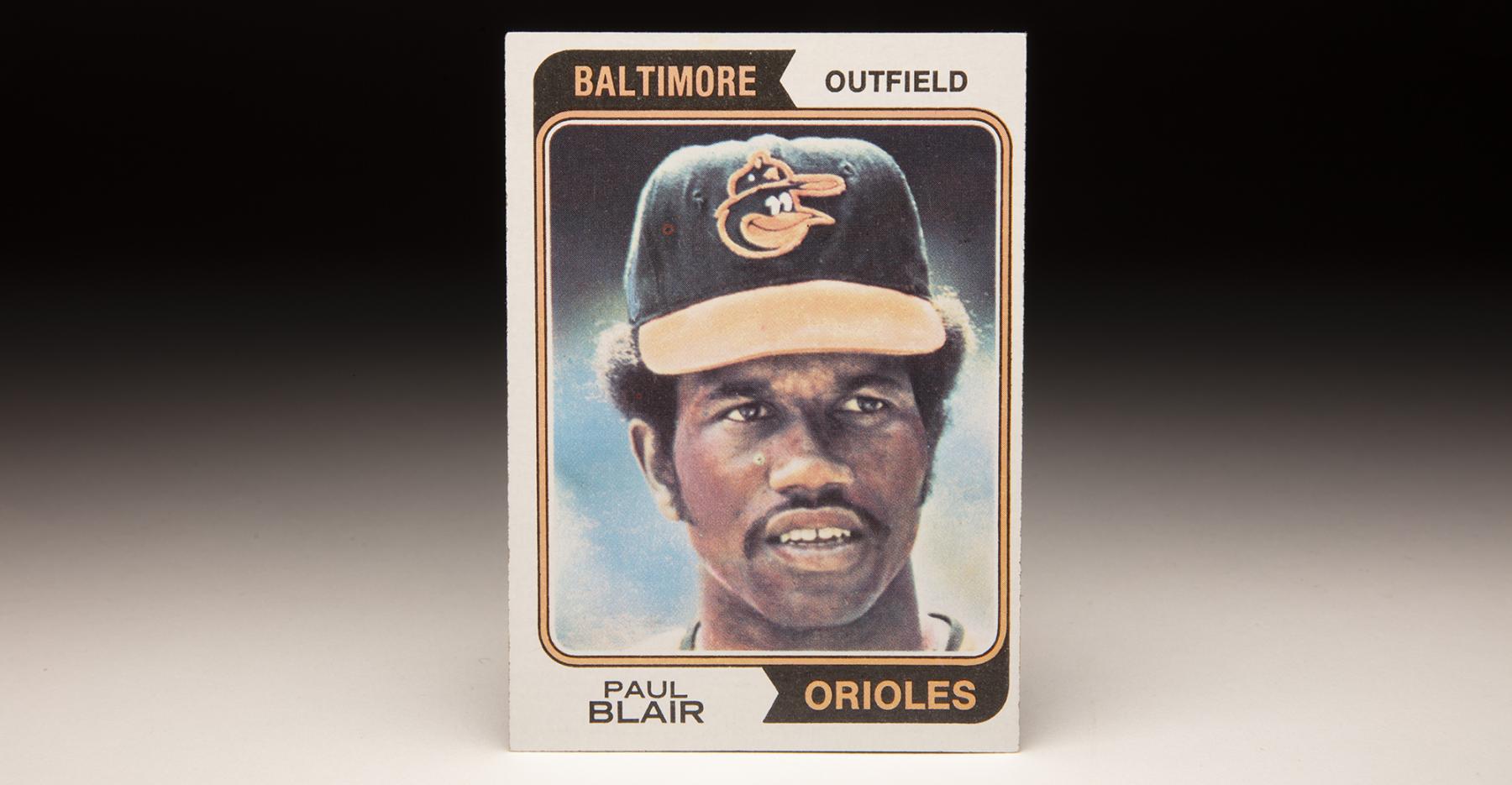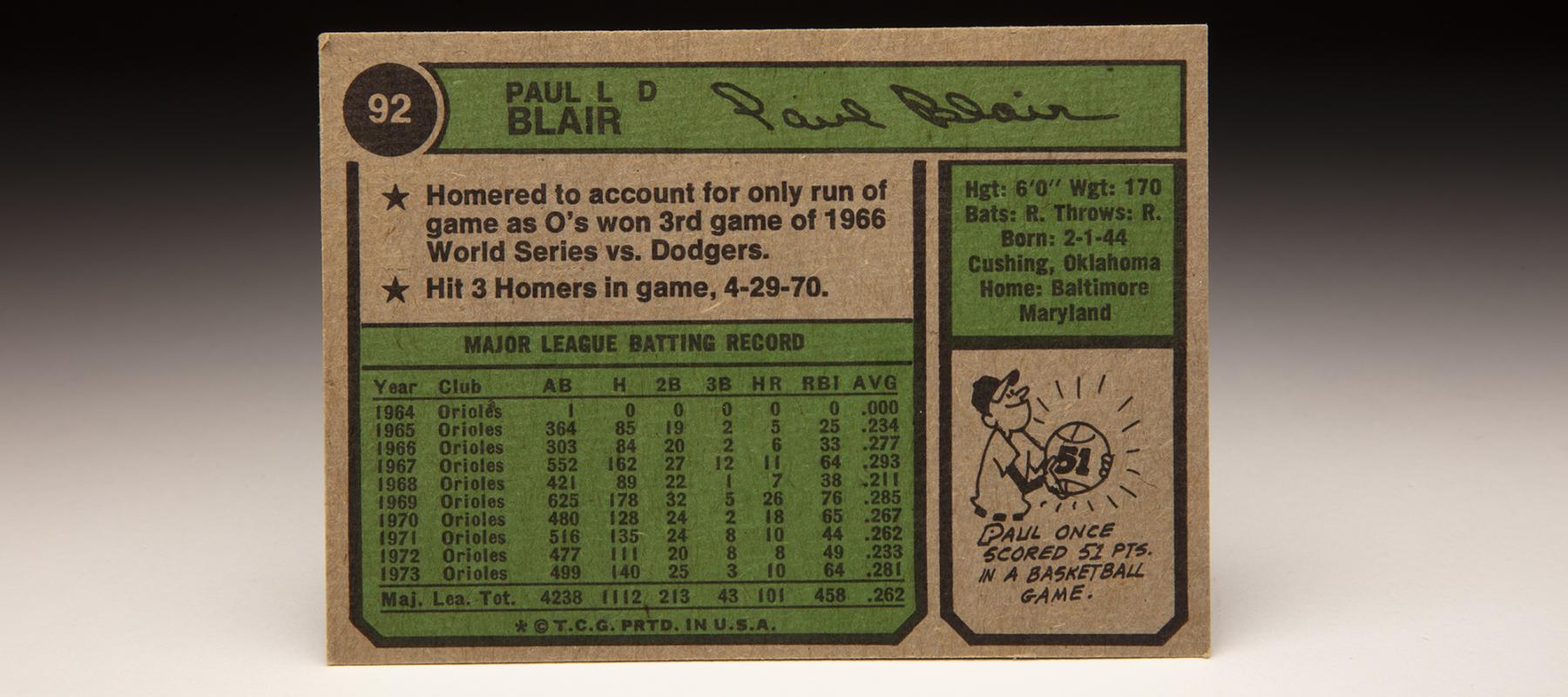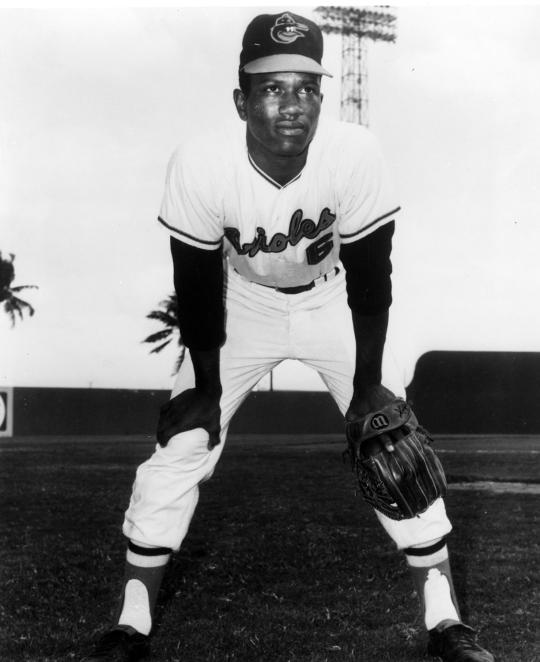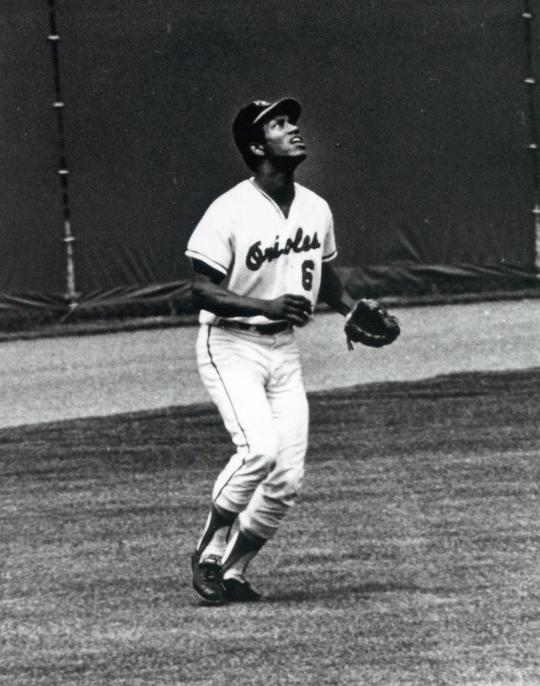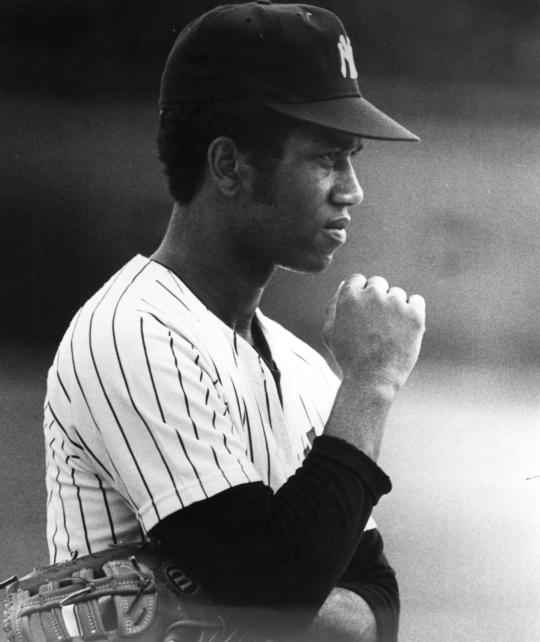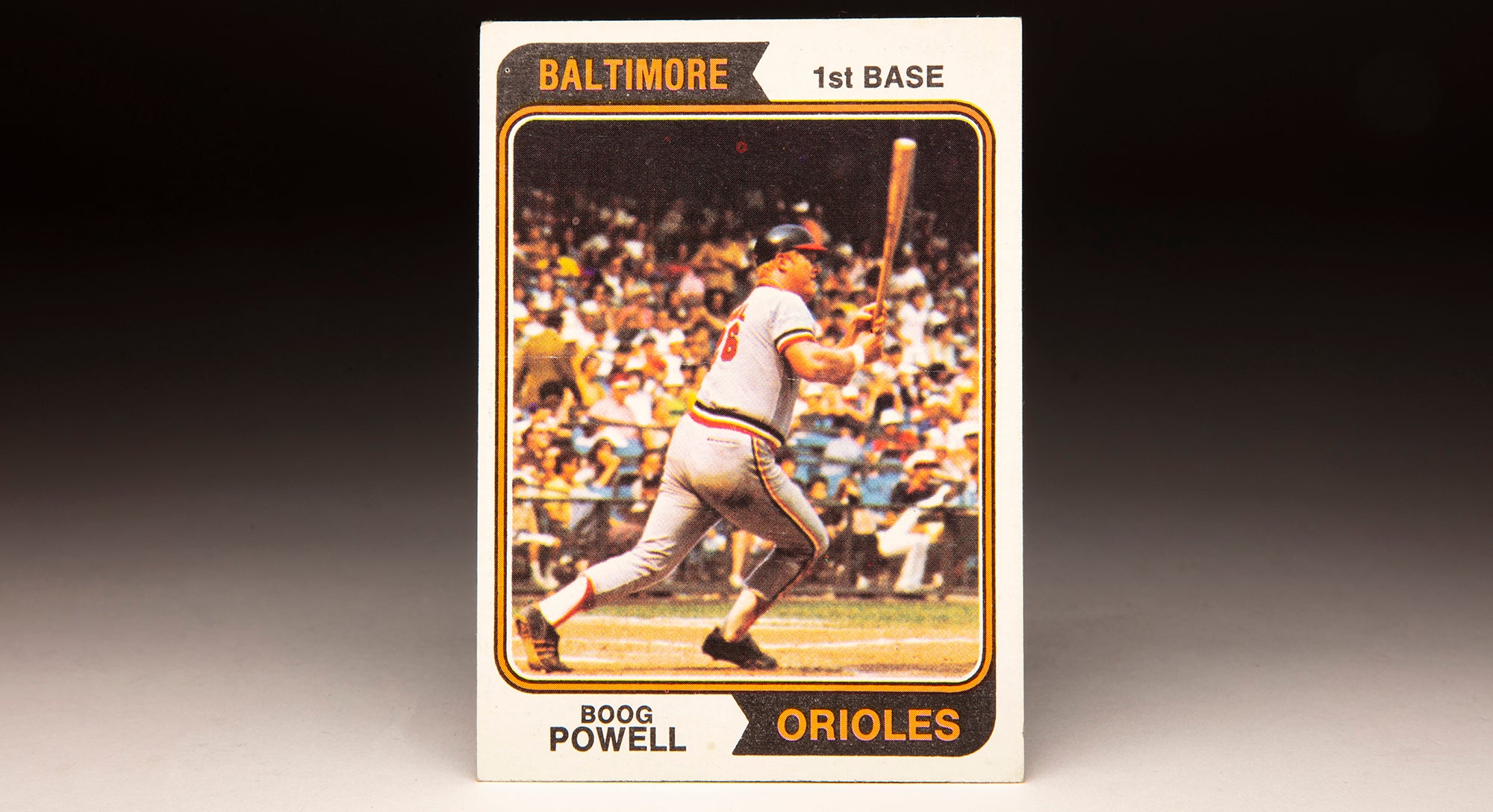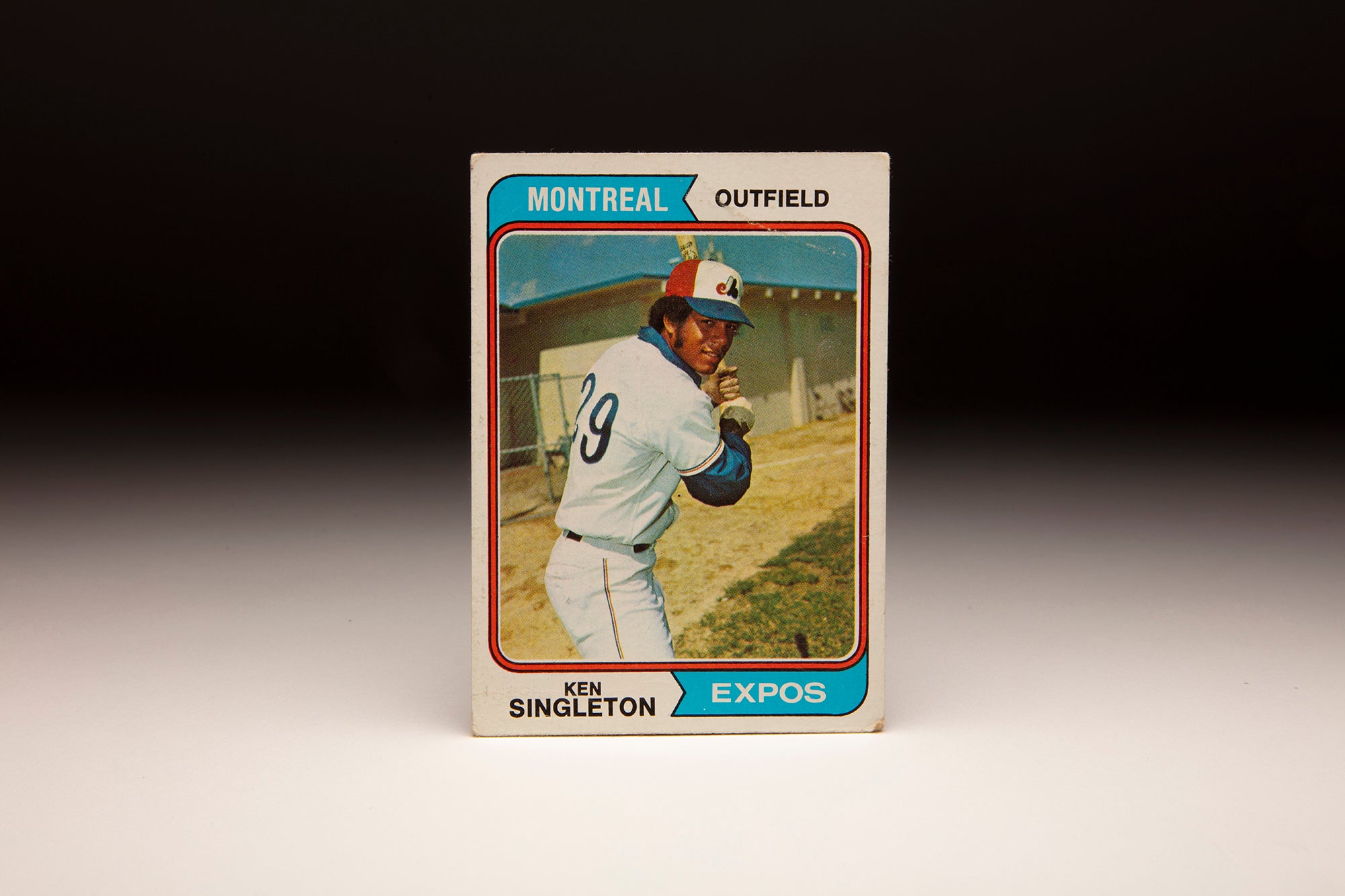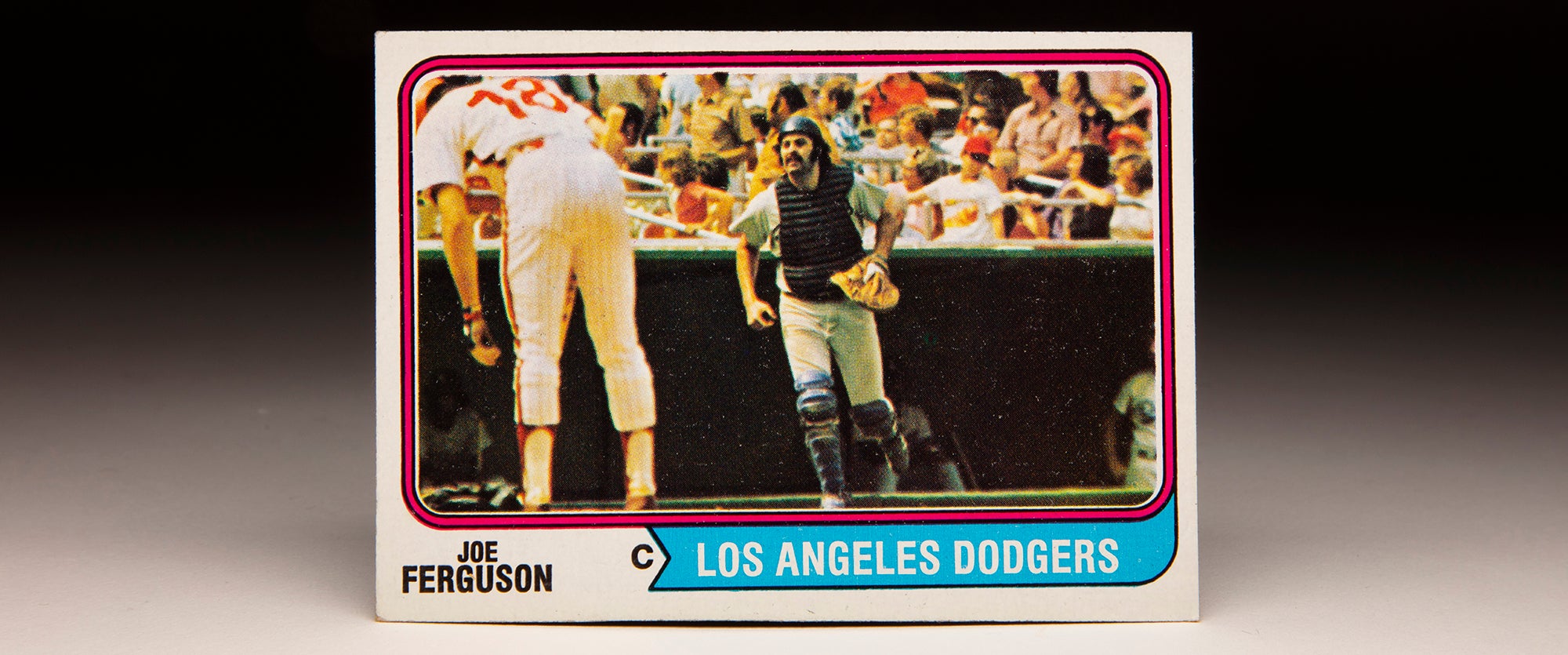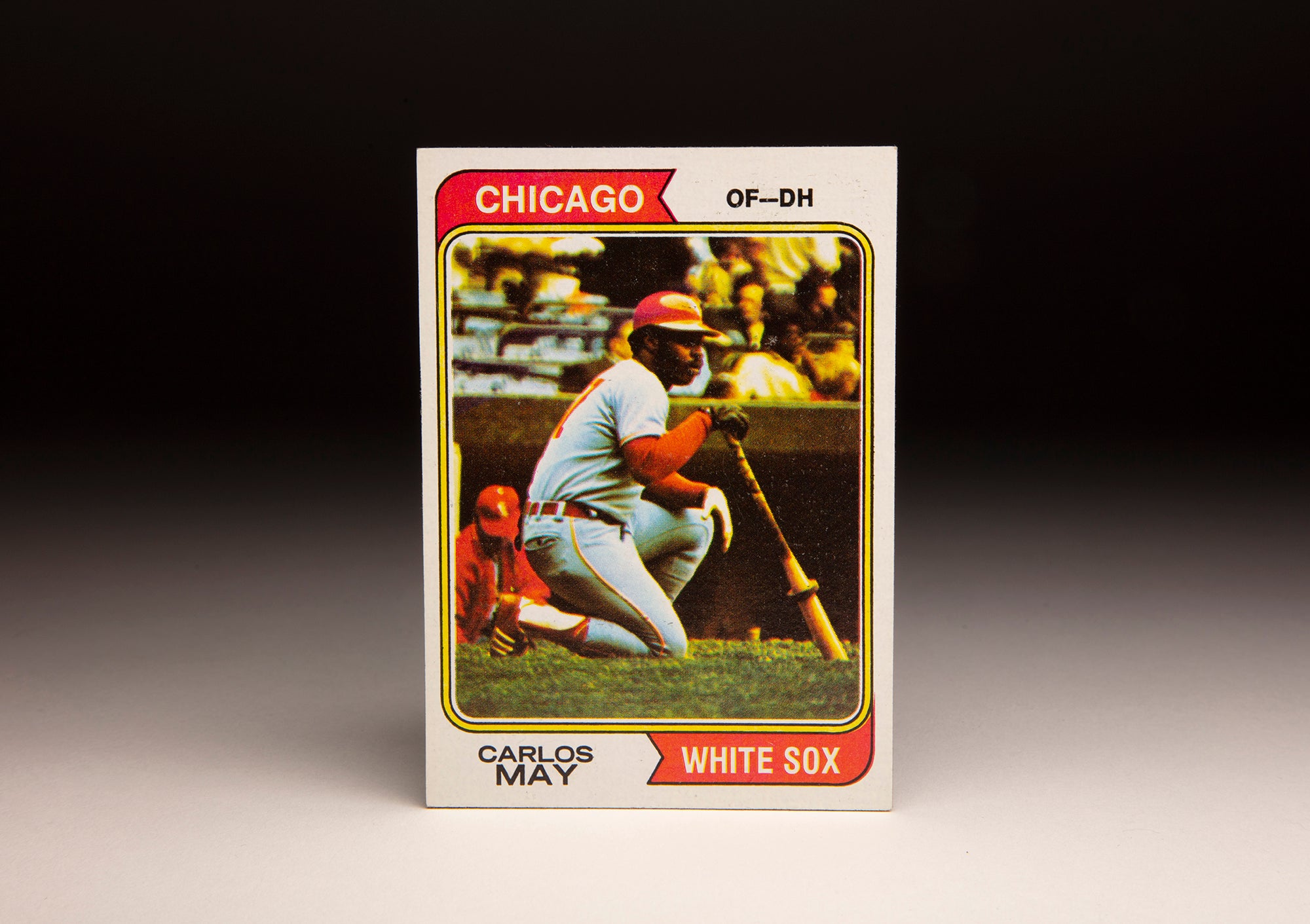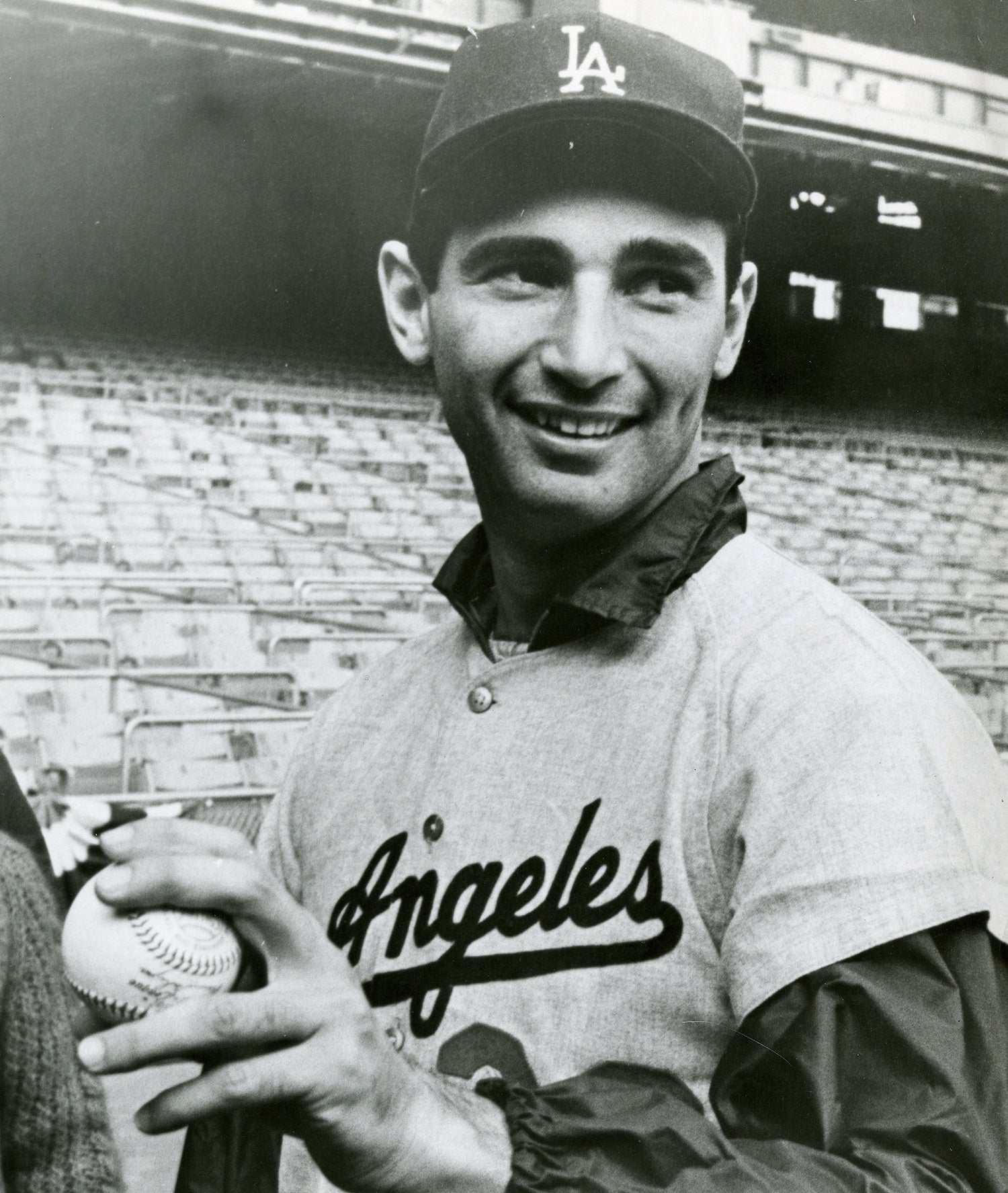- Home
- Our Stories
- #CardCorner: 1974 Topps Paul Blair
#CardCorner: 1974 Topps Paul Blair
The Baltimore Orioles of the late 1960s and early ’70s won two World Series and advanced to the postseason six times on the strength of manager Earl Weaver’s two favorite things: Pitching and three-run homers.
But it was the Orioles’ defense that made it all possible. And Paul Blair was the man in the middle.
Orioles Gear
Represent the all-time greats and know your purchase plays a part in preserving baseball history.
Blair’s eight Gold Glove Awards from 1967 through 1975 tell the story of a center fielder who roamed the huge outfields then prevalent in the American League. Blair led the AL in fielding percentage three times and putouts twice, but today’s advanced metrics put Blair in an even better light.
From 1967-73, Blair posted five seasons with at least a 2.0 defensive WAR. Only one center fielder in history – Andruw Jones – had as many as six similar seasons. Only one other – Lorenzo Cain – has had five.
Born Feb. 1, 1944, in Cushing, Okla., Blair moved to Southern California with his family during his youth. A star athlete at his Los Angeles-area high school, Blair was signed by the Mets – who were more than eight months away from playing in their inaugural game – on July 20, 1961.
Blair played his first pro games for the Class C Santa Barbara Rancheros in 1962, hitting just .228 but showing power with 17 home runs in 122 games. Following the season, the Orioles grabbed Blair – who began his career at shortstop but quickly moved to the outfield – in the first-year player draft for the sum of $8,000.
Blair again was assigned to a California-based team in 1963, this time with Class A Stockton. Blair hit .324 with 60 steals and a .400 on-base percentage, establishing himself as a top prospect. After spending most of the 1964 season with Double-A Elmira – where he hit .311 to lead the Eastern League – Blair was called up to the big leagues when rosters expanded on Sept. 1.
He debuted on Sept. 9 against the Senators as a pinch runner, then got his first at-bat in the final game of the season.
Orioles manager Hank Bauer had already anointed Blair the best defensive outfielder in the organization as early as the spring of 1964.
“I know he’s going to catch anything out there,” Bauer told the Baltimore Evening Sun
.
Blair served a tour of duty with the Army Reserves in Fort Benning, Ga., following the 1964 season, then returned to Elmira in April to get married. By that time, he had won the job as the Orioles’ starting center fielder.
“I went to Spring Training expecting to be sent down to (Triple-A) Rochester,” Blair told the Elmira Star-Gazette. “I got out of the Army eight days after (Spring Training) opened and I wasn’t too hopeful. But I was relaxed, and that more than anything helped me to have a good spring.”
Blair struggled against big league pitching in 1965, hitting .234 with five homers and 25 RBI in 119 games. But his defense kept him in the lineup, and in 1966 he boosted his average to .277 for a young Baltimore team that won the American League pennant for the first time since the franchise moved from St. Louis. Blair appeared in all four games in the World Series, starting twice. His fifth-inning homer in Game 3 against Los Angeles’ Claude Osteen gave the Orioles a 1-0 lead that stood up when Wally Bunker pitched a six-hit shutout.
The next day, Baltimore won another 1-0 decision to complete the sweep.
“I was in another world,” Blair told the Baltimore Sun as he rounded the bases in Game 3 following a home run that traveled an estimated 430 feet at Memorial Stadium. “(Sandy Koufax) pitched me tight in the second game and Osteen did the same my first time up, so I decided to look for the fastball my second time at bat. He just laid it up there in my groove and I swung.”
A jubilant Blair jumped for joy in the dugout – “I thought he was going straight up through the roof,” teammate Frank Robinson said after the game – and then performed another leap in Game 4. In the eighth inning with Baltimore holding a 1-0 lead, Blair – who had just entered the game as a defensive replacement – retreated to the wall in dead center field before jumping to catch a ball hit by Jim Lefebvre that almost certainly would have left the park and tied the game.
Blair later recorded the final out of the game on a fly ball by Lou Johnson to give the Orioles the championship.
Now firmly established as one of Baltimore’s young stars, Blair hit .293 in 1967 with an AL-leading 12 triples, 11 home runs and 64 RBI. He also led all AL center fielders with 373 putouts en route to his first Gold Glove Award.
After slumping to a .211 batting average during the Year of the Pitcher in 1968, Blair rebounded with what would become his best offensive season in 1969 – hitting .285 with 26 homers, 76 RBI and 102 runs scored for a Baltimore team that won 109 games and another AL pennant. But after batting .400 with a home run and six RBI in Baltimore’s three-game sweep of the Twins in the first-ever ALCS, Blair was just 2-for-20 in the World Series against the Mets as the Orioles fell in five games.
Then on May 31, 1970, Blair was hit in the face by a pitch from the Angels’ Ken Tatum. Blair was carried off the field on a stretcher by Orioles teammates Andy Etchebarren and Curt Motton and missed three weeks of action while recovering from his injuries, which included a broken nose. The photo of Blair being carried off the field ran in newspapers from coast to coast.
Blair played a total of 133 games that season, hitting .267 with 18 homers, 65 RBI and 24 stolen bases. The Orioles returned to the World Series, where Blair hit .474 with five runs scored and three RBI. In Game 5, Blair’s second inning RBI single gave Baltimore the lead for good in what became a 9-3 Orioles win that clinched the title.
In 1971, Orioles manager Earl Weaver asked Blair to try switch-hitting to take advantage of his speed.
Blair, a natural right-handed hitter, entered the trial with enthusiasm but ended it in late May after going 11-for-57 (.193) with no home runs and three RBI from the left side of the plate.
“I said in Spring Training I would only switch-hit if I thought I could help the club, and that if I wasn’t going good I would junk it,” Blair told the Evening Sun. “The club can’t afford the luxury of me hitting the way I’ve been hitting. It’s that simple.”
Blair finished the season batting .262 with 10 homers and 75 runs scored at Baltimore again advanced to the World Series. Blair appeared in four of the seven games – hitting .333 – but the Orioles fell to the Pirates.
The next season, Blair hit just .233 in a year when the entire AL hit just .239, helping to convince ownership to implement the designated hitter in 1973. The Orioles finished third in the AL East in ’72, but both the team and Blair bounced back in 1973 as Baltimore won the division and Blair hit .280 with 10 homers and 64 RBI. Baltimore repeated as division champs in 1974 – losing to the Athletics for the second straight year in the ALCS – with Blair hitting .261 with 17 homers, 62 RBI and a career-best 27 stolen bases.
But in 1975, Blair’s offensive production crashed to a .218 batting average and a .557 OPS. He won his eighth Gold Glove Award that year, but struggled even more at the plate in 1976 – hitting .197 with three home runs and 16 RBI in 145 games.
Blair’s defense was still as strong as ever, as he led all AL center fielders in fielding percentage in 1976 with a mark of .991. But the Orioles decided a change was necessary and dealt Blair to the Yankees on Jan. 20, 1977, in exchange for Elliott Maddox and Rick Bladt.
In a season filled with controversy in New York, Blair hit .262 off the bench as the Yankees repeated as AL East champions. In the decisive Game 5 of the ALCS against the Royals, he started in right field as Yankees manager Billy Martin benched Reggie Jackson. Blair’s single to center field leading off the ninth sparked a rally as New York turned a 3-2 deficit into a 5-3 advantage, with Blair scoring the tying run on a Mickey Rivers single.
Two days later in Game 1 of the World Series against the Dodgers, Blair entered the game in the ninth inning as a defensive replacement for Jackson. With the game tied at 3 in the bottom of the 12th, Blair was called on to bunt with Willie Randolph on second, Thurman Munson on first and no one out.
Blair missed on his first two bunt attempts, then grounded a 2-and-2 pitch from Rick Rhoden into left field to score Randolph and give the Yankees the win. Blair would only get two more at-bats in the series, but the Yankees would win the title in six games.
“I still look on the hit in Kansas City as a bigger one, as the biggest of my career,” Blair told the Los Angeles Times after Game 1 of the World Series. “The hit in Kansas City was bigger because I had to work like heck against (Royals pitcher Dennis) Leonard and I think that helped inspire the team and made everyone try a little harder.”
Blair reprised his role as the Yankees’ utility player in 1978, hitting just .176 in 75 games but providing valuable stability in another turbulent season for New York. And once again, Blair sparked a rally in the World Series when his leadoff single in the bottom of the eighth of Game 4 led to a game-tying double by Munson in a contest the Yankees ultimately won 4-3 in 10 innings.
Three days later, the Yankees would finish another six-game victory over the Dodgers to give Blair four World Series rings.
The Yankees released Blair after just two games in 1979, and a month later he signed with the Reds, where he hit. 150 in 75 games while helping Cincinnati win the NL West title. He returned to the Yankees in 1980 as a mid-season emergency pickup – he had been serving as the team’s roving minor league instructor before the Yankees were struck with a series of injuries – coming to bat two times in 12 games before he was released on July 1, ending his career.
Blair, who went on to coach collegiately at Fordham and Coppin State, retired with a .250 career batting average, 776 runs scored, 620 RBI, 171 stolen bases, 134 home runs and two All-Star Game selections. In nine of his 15 full big league seasons, Blair’s team advance to the postseason.
He passed away on Dec. 26, 2013.
“I enjoyed every bit of my career but I don’t regret walking away from it,” Blair told the Miami News in 1983. “I’m just glad that I was in the major leagues for (17) years.
“I did most of my damage with singles and doubles and by running and fielding well. You don’t have to be a power pitcher or power hitter to get to the major leagues.”
Craig Muder is the director of communications for the National Baseball Hall of Fame and Museum

